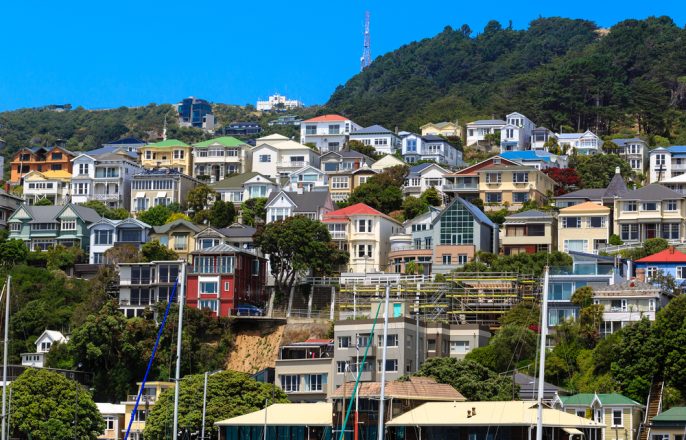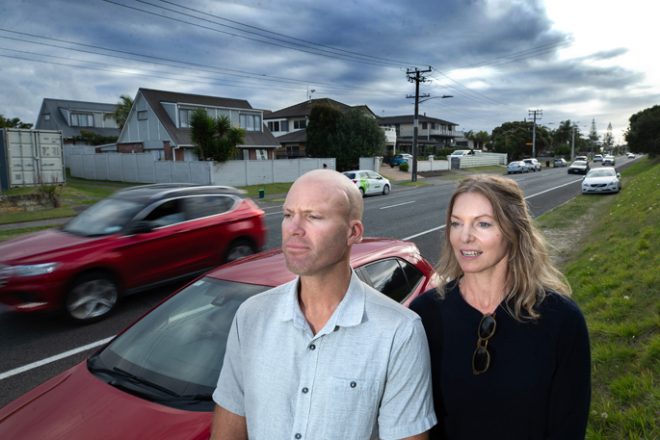On this page:
- Alert Level 4 Information for landlords and tenants
- Alert Level 3 information for landlords and tenants
- Alert Level 2 information for landlords and tenants
- Alert Level 1 information for landlords and tenants
- I/my tenants are having trouble paying rent, what are my options?
- I can’t move due to COVID-19 restrictions, do I have to pay rent to my current landlord and my new landlord?
- I am a landlord, can I still do maintenance or inspect my rental property?
- I’m a tenant in self-isolation, who do I need to tell?
- I’m in a boarding house or share-house living arrangement – what does self-isolation mean for me?
- I’m having difficulty with my landlord/tenant, what should I do?
- What were the rules that were introduced for rent increases and ending tenancies last year?
- Will the COVID-19 restrictions delay my bond refund or bond lodgement?
- I can’t complete my bond form because I don’t have access to a printer, what are my options?
Alert Level 4 information for landlords and tenants
What does Alert Level 4 mean for landlords and tenants?
- Ending tenancies and moving house
The Government has introduced an omnibus bill which includes restrictions on tenancy terminations during COVID-19 Alert Level 4. The restrictions do not currently apply. For more information, visit the Ministry of Housing and Urban Development.
At Alert Level 4, tenants should stay in their current rental properties. Tenants can only move house within an area at Alert level 4 if:
- required to do so by a court order (including a Tenancy Tribunal Order)
- if they need to use a temporary or emergency home, for example, if they need care while sick or to seek refuge from family violence or
- they are required by law to move for the purposes of detention or to move to a different place of residence that is determined for example by the Police or New Zealand Parole Board.
Tenants can move house outside an Alert Level 4 area if:
- a court order specifically outlines they must move to a home or place of residence that is outside of the Alert Level 4 area or
- they are required by law to move for the purposes of detention or to move to a different place of residence that is determined for example by the Police or New Zealand Parole Board.
If your tenancy is due to end during the Alert Level 4 period, talk to your landlord or tenant about extending the tenancy until the Alert Level changes. For example:
- If a fixed-term tenancy is due to expire during Alert Level 4, landlords and tenants could agree to either renew or extend the fixed-term tenancy, or convert the tenancy to a periodic tenancy.
- If the landlord or tenant has given notice and a periodic tenancy is due to terminate during Alert Level 4, the landlord and tenant could agree that the tenancy will be extended. Remember that tenants may need extra time to find a new tenancy once the Alert Level has changed.
- If a tenant remains in a property after the tenancy was due to end they need to continue to pay the rent.
Tenants and landlords who have signed new tenancy agreements that are due to start during Alert Level 4 should talk to each other to reach an agreement. For example, you may agree to postpone the start date of the tenancy so the tenant doesn’t have to pay rent before they are able to move in. You could also agree to a rent reduction perhaps in conjunction with the tenant’s current landlord to share the cost/loss evenly between the different parties.
Landlords should also remember if they are unable to provide the new tenants with the property then generally rent should not be charged for that period of time.
Tenants who are between tenancies and have nowhere to stay should call Work and Income on 0800 559 009. They may be able to help with emergency housing or other accommodation.
Rent
Tenants may experience financial stress during Alert Level 4 if they can’t work. Landlords should discuss any planned rent increases with their tenants and consider postponing rent increases if possible. Tenants and landlords are encouraged to talk to each other as soon as possible if there are going to be any issues around paying rent. Read our guidance on rent discussions.
Property inspections and maintenance
Landlords must not visit their tenants or carry out in-person inspections during Alert Level 4. They can carry out a virtual inspection, with agreement from their tenants.
For maintenance, at Alert Level 4 you can hire a tradesperson to carry out repairs if there is an immediate risk to health and safety.
Non-urgent repairs and maintenance can’t happen during Alert Level 4.
Disputes
Tenants and landlords are encouraged to talk to each other to try to come up with a solution together. Where this is not possible, Tenancy Services will continue to accept and process applications for the Tenancy Tribunal or mediations at Alert Level 4.
During Alert Level 4 there will be no face-to-face hearings or mediations. Where possible, hearings or mediations will take place over teleconference. If this is not possible, the hearing or mediation will be rescheduled.
If you have a hearing or mediation scheduled during COVID-19 Alert Level 4, teams will be in contact, by phone, email or text, to let you know what this means for you.
Alert Level 3 information for landlords and tenants
What does Alert Level 3 mean for landlords and tenants?
Moving house
Tenants who live in an Alert Level 3 area can move house to an area at the same Alert Level.
If tenants are moving within an area that is at Alert Level 3, removal companies can assist with moving (following the appropriate Alert Level requirements).
Friends and family can’t help you move at Alert Level 3, unless they are already part of your bubble.
If tenants are moving house within an area at Alert Level 3 it is recommended they carry documents to show their travel is permitted for example a tenancy agreement.
Tenants can only move house from an area at Alert Level 3 to an area at Alert Level 2 if they are:
- moving house on a permanent or long-term basis because they are either starting new employment, attending tertiary education or purchasing or renting a new principal home or place of residence
- leaving to return to their permanent home
- required to do so by a court order or
- required by law to move for the purposes of detention or to move to a different place of residence that is determined for example by the Police or New Zealand Parole Board.
Tenants moving from an area at Alert Level 3 to an area at Alert Level 2, must carry evidence of a negative COVID-19 test result administered no more than 72 hours before departure from an area at Alert Level 3.
Tenants moving into an area at a different Alert Level must legally have documents on them to show that they are moving house. For example, a tenancy or sales agreement or proof of address. Find out more about moving on the Unite against COVID-19 website.
Moving companies can only assist with a move between Alert Level regions if they have received an exemption from the Ministry of Business, Innovation and Employment.
Property inspections
In-person inspections of rental properties can take place with the tenant’s consent, as long as public health measures are followed, including physical distancing, record keeping and mask wearing requirements.
Landlords and tenants should discuss and agree on whether in-person inspections are necessary. Tenants who have genuine concerns about access into their home during this time should talk to their landlord. If the inspection is not urgent, landlords and tenants may agree to postpone the inspection to a later date.
Virtual inspections are an option if the tenants agree.
At the end of the tenancy, the landlord and tenant can do the final property inspection together if both parties agree, following public health guidance on physical distancing, record keeping and mask wearing. Alternatively, the tenants can take photos of the property’s condition before leaving.
Property maintenance
Landlords should get the tenants’ consent before doing any maintenance.
Tradespeople may enter people’s homes to do any repair or construction work, however public health measures must be followed, including physical distancing and record keeping for contact tracing purposes. Tradespeople must wear face masks.
Landlords and tenants should discuss and agree on access requirements for any repair or construction work.
Tenants who have genuine concerns about access into their home during this time should talk to their landlord. For example, if they or someone they care for are at higher risk from COVID-19.
If the maintenance or repairs are not urgent, landlords and tenants may agree to have the work completed at a later date.
Do not invite people to your home for maintenance if you or anyone in your household is unwell or self-isolating.
Property viewings
Open homes and auctions cannot take place in person, but they can happen remotely, with the tenants’ consent.
In-person viewings can happen as long as you have the tenants’ consent and public health measures are followed, including physical distancing, record keeping and mask wearing. At property viewings, a QR code must be prominently displayed or by near the main entrance so people can record their visit.
If the property being viewed is tenanted, landlords will need approval from the tenants and viewings should only occur when the tenants are not at the property.
No one from a different Alert Level can attend in-person viewings.
Disputes
Tenants and landlords are encouraged to talk to each other and to try to come up with a solution together. Where this is not possible, Tenancy Services will continue to accept and process applications for the Tenancy Tribunal or mediations at Alert Level 3.
During Alert Level 3 there will be no face-to-face hearings or mediations. Where possible, hearings and mediations will take place over teleconference. If this is not possible, the hearing or mediation will be rescheduled.
If you have a hearing or mediation scheduled during COVID-19 Alert Level 3, we will be in contact, by phone, email or text, to let you know what this means for you.
More information about Alert Level 3 is on the Ministry of Housing and Urban Development website
Alert Level 2 information for landlords and tenants
What does Alert Level 2 mean for landlords and tenants?
Moving house
Tenants in an Alert Level 2 area can move house between areas that are at Alert Level 2.
If tenants are moving within an area at Alert Level 2, removal companies can assist with moving (following the conditions of physical distancing and contact tracing). People living in an Alert Level 2 area can also help you move.
Tenants can move house from an area at Alert Level 2 to an area at Alert Level 3 if they are moving to their main home or place of residence.
Tenants must legally carry documents with them to show that you are moving house to help explain your travel. This could be a tenancy or sales agreement or proof of address.
Moving companies can only assist with a move between areas at different Alert Levels if they have received an exemption from the Ministry of Business, Innovation and Employment.
You are only permitted to travel through an area at Alert Level 3 (eg from an area at Alert Level 2, through an area at Alert Level 3, to get to a property in an area at Alert Level 2) for the following reasons:
- If you are relocating your home on a permanent or long-term basis.
- If you are arranging or carrying out the relocation (including to inspect the property or a potential property).
- If you are required by law to move for the purposes of detention or to move to a different place of residence that is determined for example by the Police or New Zealand Parole Board.
- If you are required to move due to a court order (including a Tenancy Tribunal order).
You must, so far as reasonably practicable, travel through an area at Alert Level 3 without stopping.
Tenants must legally have documents on them to show that they are moving house through an area at Alert Level 3, for example, a tenancy or sales agreement or proof of address. Find out more about the evidence you will need to provide on the Unite against COVID-19 website.
Property inspections
In-person inspections of rental properties can take place. During inspections, physical distance should be maintained and hygiene measures followed. Records should be kept for contact tracing purposes.
Property maintenance
Maintenance can occur. Public health measures must be followed, including physical distancing, record keeping and mask wearing.
Landlords should get the tenants’ consent before doing any maintenance.
Property viewings
Open homes and in-person viewings are permitted in an area at Alert Level 2 with the tenant’s consent. Public health measures must be followed, including physical distancing, record keeping and mask wearing.
At property viewings and open homes, a QR code must be prominently displayed at or near the main entrance so people can record their visit.
Only tenants who live in an Alert Level 2 area will be able to view a property in an Alert Level 2 area.
You must follow guidelines set out on the COVID-19 website .
Real Estate Authority guidance for in-person inspections where a property is for sale (also applicable to rental viewings) .
Disputes
Tenants and landlords are encouraged to talk to each other and to try to come up with a solution together. Where this is not possible, Tenancy Services will continue to accept and process applications for the Tenancy Tribunal or mediations at Alert Level 2.
Tenancy Tribunal hearings and mediation will be operating in-person (following the appropriate Alert Level health and safety requirements) and remotely by telephone at Alert Level 2.
If you have a face to face Tenancy Tribunal hearing or mediation scheduled during Alert Level 2 and there is a change we will be in contact, by phone, email or text, to let you know what this means for you.
More information about Alert Level 2 is on the Ministry of Housing and Urban Development website Alert Level 1 information for landlords and tenants
What does Alert Level 1 mean for landlords and tenants?
There are no additional restrictions on moving house, property viewings (including open homes) or maintenance and inspections at Alert Level 1.
Landlords must note that from 12 August 2020, rent cannot be increased within 12 months of the start of the tenancy or the last rent increase. Find out more about the legislation on our law changes webpage.
More information about Alert Level 1 is on the Ministry of Housing and Urban Development website.
I/my tenants are having trouble paying rent, what are my options?
Due to loss of employment income, some tenants may experience issues paying their rent.
Tenants who can’t pay their rent should let their landlord know straight away. Be honest about the situation. Landlords and tenants may agree to a temporary rent reduction if tenants are having difficulty paying rent during the COVID-19 Alert Level restrictions.
If you are likely to continue having trouble, think about other options:
- You can get in touch with budgeting services, Work and Income or other agencies to see what support is available.
- The Government’s Wage Subsidy and Leave Payment scheme may be available to eligible employers and workers. See the Government’s COVID-19 website for more information.
Tenants are still liable for rent and landlords can ask tenants to pay what is due. Landlords can also seek a monetary order from the Tribunal for rent arrears, but should try to reach an agreement with their tenants before taking this step.
I can’t move due to COVID-19 restrictions, do I have to pay rent to my current landlord and my new landlord?
If a tenant remains in a property after the tenancy was due to end they need to continue to pay the rent.
Tenants and landlords who have signed new tenancy agreements that are due to start during Alert Level 4 should talk to each other to reach an agreement. For example, you may agree to postpone the start date of the tenancy so the tenant doesn’t have to pay rent before they are able to move in. You could also agree to a rent reduction perhaps in conjunction with the tenant’s current landlord to share the cost/loss evenly between the different parties.
Landlords should also remember if they are unable to provide the new tenants with the property then generally rent should not be charged for that period of time.
Read our Guidance on rent discussions
I am a landlord, can I still do maintenance or inspect my rental property?
At Alert Level 4
Landlords must not visit their tenants or carry out in-person inspections during Alert Level 4. They can carry out a virtual inspection, with agreement from their tenants.
For maintenance, at Alert Level 4 you can hire a tradesperson to carry out repairs if there is an immediate risk to health and safety.
Non-urgent repairs and maintenance can’t happen during Alert Level 4.
At Alert Level 3
Landlords should get the tenants’ consent before doing any maintenance.
Tradespeople may enter people’s homes to do any repair or construction work, however physical distancing must be maintained and hygiene measures followed. Records should be kept for contact tracing purposes.
Landlords and tenants should discuss and agree on access requirements for any repair or construction work.
Tenants who have genuine concerns about access into their home during this time should talk to their landlord. For example, if they or someone they care for are at higher risk from COVID-19.
If the maintenance or repairs are not urgent, landlords and tenants may agree to have the work completed at a later date.
Do not invite people to your home for maintenance if you or anyone in your household is unwell or self-isolating.
If you are a landlord, you can carry out any in-person property inspections with the tenant’s consent.
Tenants who have genuine concerns about access into their home during this time should talk to their landlord and postpone the inspection if it’s not urgent.
At Alert Level 2
At Alert Level 2, property inspectors, property valuers, engineers tradespeople and cleaners can visit your home. If you are a landlord, make sure you get your tenant’s consent first.
Anyone inspecting or carrying out maintenance on a property needs to follow physical distancing guidelines and keep 2 metres apart from people they do not know.
Try to limit the number of people visiting your property at the same time to help with physical distancing. We recommend keeping a record of the people who visit your home to help with contact tracing.
People should not visit your property if you or any of the occupants are unwell or are self-isolating.
Information on maintenance and inspections
I’m a tenant in self-isolation, who do I need to tell?
Tenants are under no obligation to tell their landlord if they are self-isolating (eg if they have been to a location of interest) or sick with COVID-19.
Do not invite people to your home if you or anyone in your household is unwell or self-isolating.
If a tradesperson is required to go to the property to do repairs while the tenant is self-isolating, tenants should advise the landlord or tradesperson that they are self-isolating or unwell.
Tenants should also make sure any other tenants or flatmates are aware of the situation.
Follow the guidelines on the central government COVID-19 website.
I’m in a boarding house or share-house living arrangement – what does self-isolation mean for me?
Boarding house tenants and landlords need to follow the self-isolation guidelines .
If you live in a boarding house, you should pay extra attention to the information on using shared facilities on the Ministry of Health website .
Boarding house landlords should consider changing the house rules to include the self-isolation guidance. Boarding house tenants must comply with the house rules and this may help reinforce the self-isolation requirement.
I’m having difficulty with my landlord/tenant, what should I do?
Landlords and tenants should talk to each other, work together and take care of each other wherever possible. Try to come to an arrangement that suits everyone.
If you can’t reach an agreement you can apply for mediation through the Tenancy Tribunal.
Discrimination against prospective tenants or current tenants is unlawful under tenancy law when it breaches the Human Rights Act. For example, it is unlawful to:
- not grant a tenancy to a person for any of the prohibited grounds of discrimination, for example because of their race, nationality, or disability. Disability includes physical illness, or the presence in the body of organisms capable of causing illness. This includes COVID-19.
- discriminate when deciding to continue, extend, renew, vary, or to end a tenancy. More information on discrimination. If you are in an accommodation arrangement that is not covered by the Residential Tenancies Act, and you think you have been discriminated against, you can contact the Human Rights Commission.
More information on discrimination
If you are in an accommodation arrangement that is not covered by the Residential Tenancies Act, and you think you have been discriminated against, you can contact the Human Rights Commission .
What were the rules that were introduced for rent increases and ending tenancies last year?
Rent increase freeze
Landlords can currently increase the rent in accordance with the usual rent increase rules.
A rent increase freeze was in place from 26 March to 25 September 2020. During that time landlords could not increase the rent for their rental properties.
Tenants may experience financial difficulty during Alert Levels 3 and 4. Landlords should discuss any planned rent increases with their tenants and consider postponing rent increases if possible.
Guidance for rent negotiation discussions
Tenancy terminations
Landlords can currently terminate tenancies in accordance with the usual termination rules. There were restrictions against tenancy terminations in place from 26 March to 25 June 2020. These restrictions are not currently in effect.
Will the COVID-19 restrictions delay my bond refund or bond lodgement?
As part of the Government response to COVID-19 bond refunds and bond transfers are being treated as an essential service. This means we will continue to process refunds within 5 working days.
We will also continue to process bond lodgements, however, there may be delays whilst resources are being reprioritised for refunds and transfers.
If we need further information in order to process your request, we will contact you by phone, email or letter.
I can’t complete my bond form because I don’t have access to a printer, what are my options?
If you don’t have access to a printer at Alert Level 3 or 4, you can email bonds@tenancy.govt.nz and we will come back to you to explain the options. Please include your full property address or bond number in the email.
If the bond is not urgent, you can also wait until after the Alert Level restrictions are lifted, to print and sign your completed forms.



















































-helped-regain-her-strength-and-balance-using-Nymbl-after-a-fall.-660x440.jpg)




